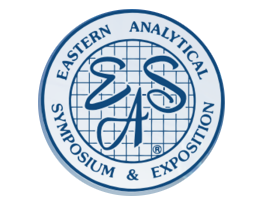Two-Day Course
Sunday, Nov. 17 and Monday, Nov. 18; 8:30am – 5:00pm
James Kababick, Flora Research Laboratories, Grand Pass, OR
Wilmer Perera, CAMAG Scientific, Wilmington, NC
High-performance thin-layer chromatography (HPTLC) has been widely used in the dietary supplements industry and it’s become the gold standard for the identification of botanicals. The HPTLC features together with the comprehensive fingerprinting offers a complementary approach to describing the quality of complex samples in a unique way. HPTLC is also a powerful tool to perform quantitative analysis, hence, it can be used as a reliable analytical technique in any application field. This 2-day short course will cover concepts, parameters and unique features of HPTLC. It will discuss the rigorous standardization of the technique and how combined with full automation and modern approaches can be applied to routine quality control analysis. The use of case studies will emphasize the advantages of the technique and the practical sessions highlight strategies for developing and validating qualitative and quantitative methods. Attendees will have the opportunity to discuss current concepts and the future of HPTLC in an open forum.
WHO SHOULD ATTEND
QA/QC/R&D Personnel, Lab Managers. Technicians, Researchers, Scientists and Academicians.
Anyone interested in learning about the qualitative and quantitative capabilities of HPTLC.
Anyone wanting to learn about how to get the most of an existing HPTLC system.
Anyone who wants to start thinking out of the box of liquid chromatography
TOPICS
DAY 1
1. Concepts, Parameters, and Special Features of HPTLC
a. What is so special about HPTLC?
b. Rigorous standardization and flexible hyphenation – the two strong elements of HPTLC
c. Automatic HPTLC – the new basis for new analytical approaches
2. Practical session: Tips for generating reliable HPTLC results
3. Comprehensive HPTLC Fingerprinting
a. The Universal HPTLC mix in system suitability testing
b. Comprehensive HPTLC fingerprinting: a different look at quality
c. Complementary HPTLC fingerprints
4. Cases Studies: Development of a Comprehensive HPTLC Analysis for Botanicals and Food Products.
5. Practical Session: Strategies to ID Polyherbal Formulations
- Quantitative analysis by HPTLC
a. Principles of scanning densitometry
b. Assays and limit tests
c. Economic considerations - Case study: quantification of amino acids, sugars, caffeine and acetaminophen.
- Practical session: development, validation and transferring validated HPTLC methods
- The future of HPTLC
a. Specialized vs universal screening methods
b. Complementary mobile phases for routine quality control
c. “new” definitions of quality - Open forum: questions and answers about the future of HPTLC
Day 2
- Proper use of the HPTLC Instrumentation and Software
a. Creating a method, analysis and comparison files
b. Special features - Analysis of Related Plant Species
a. The use of the universal system suitability test in practice
b. Differentiation of Passiflora species and chemotypes - Mushroom Analysis: Fruiting Body, Fruiting Body and Mycelium Extracts
a. Authentication of Cordyceps millitaris
b. Quantification of specific markers
ABOUT THE INSTRUCTORS

James Kababick is the founder and Director of Flora Research Laboratories, LLC (FRL) which specializes in the research and analysis of botanicals, dietary supplements and related compounds. He is also the interim President of the North American Chapter of the HPTLC Association. For many years he served as an adjunct faculty at Bastyr University where he taught botanical drug identification by microscopy and thin layer chromatography. He serves on multiple expert committees for AOAC, USP, NIH, AHPA, and others. James is the pioneer of the field called “Phytoforensic Science.” Phytoforensic Science involves utilizing numerous technologies from microscopy to mass spectrometry to detect adulteration and contamination in the global food supply chain with a special focus on dietary supplements. In 2010 James was named “Fellow of AOAC.” He currently serves on the 2020-2025 USP Botanical Dietary Supplements & Herbal Medicines Expert Committee, the USP Joint Standard Settings Subcommittee, the Subcommittee on Modern Analytical Methods, the USP Dietary Protein Expert Committee, and the Saw Palmetto Modernization working group. James is the interim president of the North American Chapter of the HPTLC Association.

Wilmer Perera received his bachelor’s degree in chemistry and master’s degree in Organic Chemistry from the University of Havana, Cuba. He also completed his doctorate in Biochemistry at the University of Liege, Belgium in 2012. He has published 40 papers in peer-reviewed journals and has performed multiple presentations in national and international meetings. He is currently the laboratory director at CAMAG Scientific, Inc, and oversees HPTLC analyses and projects, as well as training and courses to customers in the United States of America and Canada. Dr. Perera is also the General Secretary of the North America Chapter of the International Association for the Advancement and collaborates on the HPTLC Atlas for identification of herbal drugs. He is also a USP expert advisor in Botanical Dietary Supplements & Herbal Medicines, Non-Botanical Dietary Supplements and Botanical Pan American Expert Pannel.

